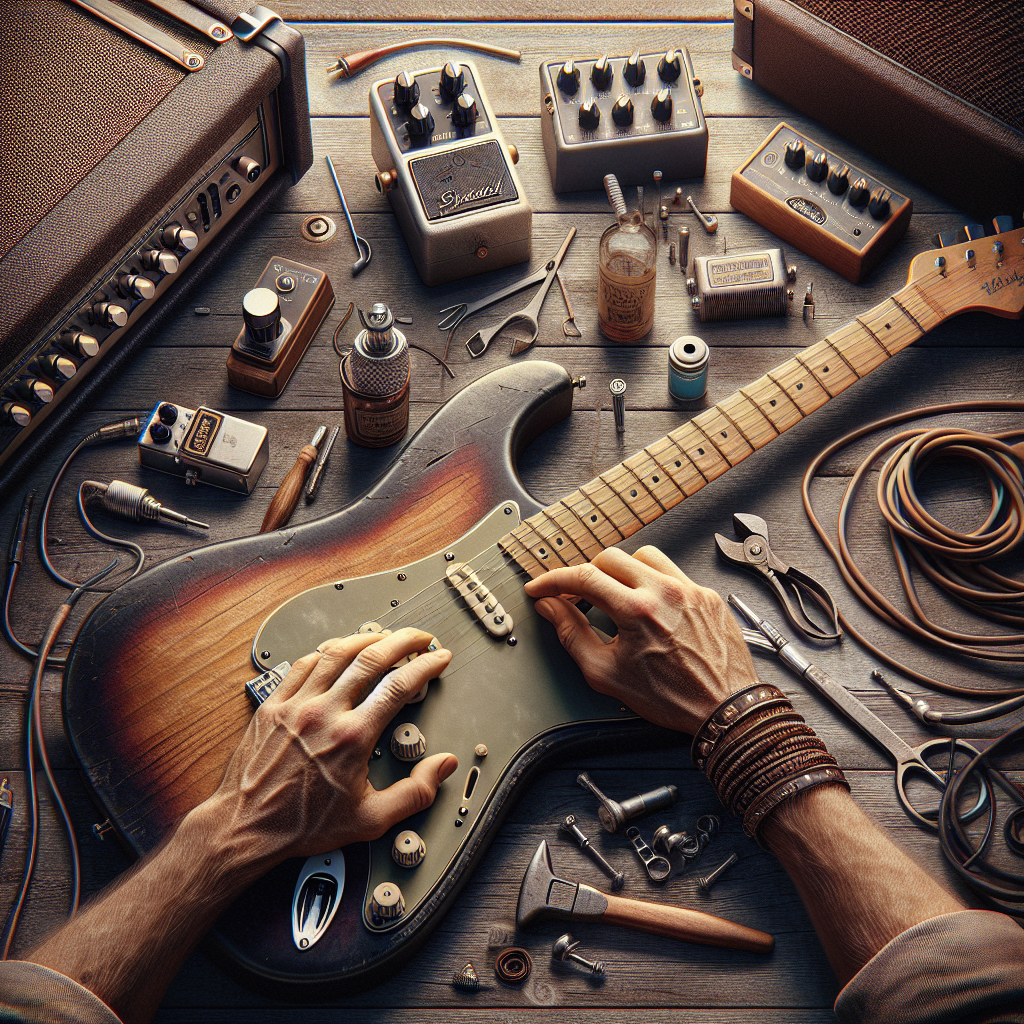
How to Achieve the Perfect Blues Tone: 7 Essential Tips
The blues is not just a genre of music; it’s a feeling, an emotion, and a language that speaks directly to the soul. One of the key elements of a captivating blues performance is the “blues tone,” which can make your guitar sing as if it’s telling a story. But how can you achieve this elusive perfect blues tone? Here are seven essential tips that will guide you on your journey to perfecting that sound.
1. Understanding Your Gear
Your journey to achieving the perfect blues tone starts with your gear. You don’t need the most expensive equipment, but understanding what suits blues best is crucial. Blues guitarists often favor guitars like the Fender Stratocaster or the Gibson Les Paul for their warm yet biting tone. As for amplifiers, a tube amp is generally preferred because of its natural compression and warmth. The combination of your guitar with the right amp can significantly influence your tone.
2. Choosing the Right Strings and Pick
String choice is a vital factor in achieving your desired blues tone. Heavier gauge strings tend to deliver a fuller and warmer sound, which is great for blues. Experiment with different materials, such as pure nickel, for a more vintage vibe. Similarly, the pick you use can affect the attack and dynamics of your playing. Many blues players prefer medium to heavy picks for more control and richer tones.
3. Setting Up Your Guitar’s Action
The action of your guitar, or the height of the strings above the fretboard, can affect playability and tone. Blues players often favor slightly higher action, allowing for more expression and vibrato without the strings buzzing. Although it may require more effort to play, the ability to bend notes and achieve clearer intonation is worth it.
4. Exploring the Magic of Pedals
Pedals can add color and texture to your blues tone. Overdrive and distortion pedals are classics for blues, helping you get that “dirty” sound that still rings clear. Reverb can add atmosphere, making your notes resonate as if you’re performing in a large hall. Experimenting with different effects like delay or chorus can also add unique dimensions to your sound, helping you craft a signature tone.
5. Mastering Playing Techniques
Even with the best gear, getting the perfect blues tone also involves mastering a few key playing techniques. Learn to control your dynamics — sometimes a softer touch can create more feel than a loud, aggressive strum. Note bending is essential, providing that expressive “blue note” sound. Also, work on your vibrato, as it adds emotion and soul to sustained notes.
6. Enhancing with EQ Settings
Your amplifier’s EQ settings can significantly alter your sound. For a warmer blues tone, try rolling off some of the treble and boosting the mids. This setup emphasizes your guitar’s presence without making the sound too bright or harsh. Remember that each amp is different, so don’t be afraid to experiment with knobs until you find what sounds best.
FAQs About Achieving the Perfect Blues Tone
What guitar should I use for blues music?
The most popular choices for blues guitars are the Fender Stratocaster and the Gibson Les Paul. However, the right guitar for you depends on your personal comfort and the specific sound you desire.
What amp is best for a blues tone?
Tube amps are widely favored for blues because they offer a warm, responsive sound. Brands like Fender, Marshall, and Vox are popular choices among blues musicians.
Should I use heavy gauge strings for blues?
Heavier gauge strings are often preferred by blues guitarists because they offer a fuller sound and better sustain. However, they require more finger strength to bend and fret.
How do I get a smooth blues tone with pedals?
Start with an overdrive pedal to add warmth and grit to your sound. A touch of reverb can also enhance your tone by making it more spacious and atmospheric.
Can I achieve a blues tone on an acoustic guitar?
Absolutely! While electric guitars are more common in blues, acoustic guitars can produce beautiful, expressive tones that work well in the genre. Playing techniques and string choice are crucial here.
How important are playing techniques in achieving a blues tone?
Techniques like bending, sliding, and vibrato are essential in achieving an authentic blues tone. They add expressiveness and soul to your playing that gear alone can’t provide.
How can I find my unique blues tone?
Finding your unique blues tone takes time and experimentation. Try out different combinations of gear, settings, and techniques until you discover a sound that resonates with you personally.
Conclusion
Achieving the perfect blues tone is a continuous journey that requires exploring and understanding your gear, experimenting with different techniques, and developing a sound that resonates with you. Remember, the key to a true blues tone is expression — let your guitar translate your emotions into music. Don’t be afraid to try new things and make the journey your own. For more information on equipment and techniques popular among blues guitarists, visit Sweetwater’s Guide on Blues Guitar Tone. Transform your playing and enjoy the process of creating your signature blues sound!